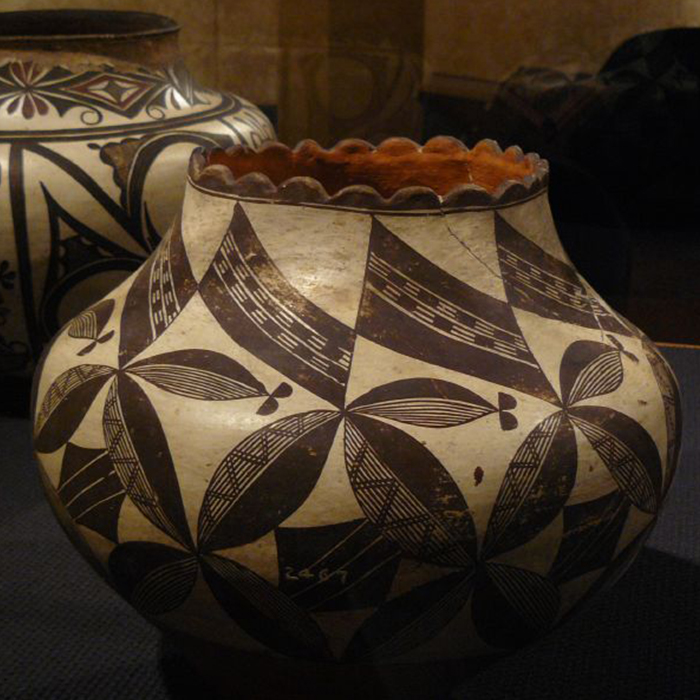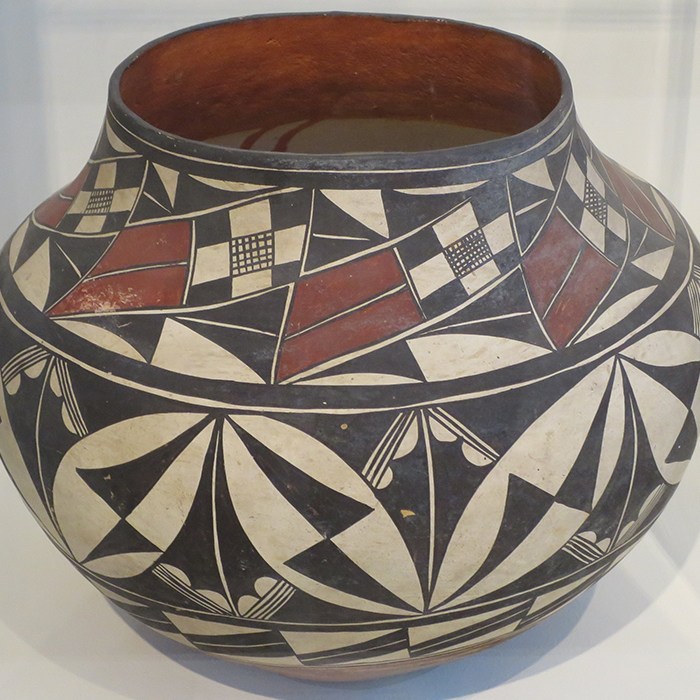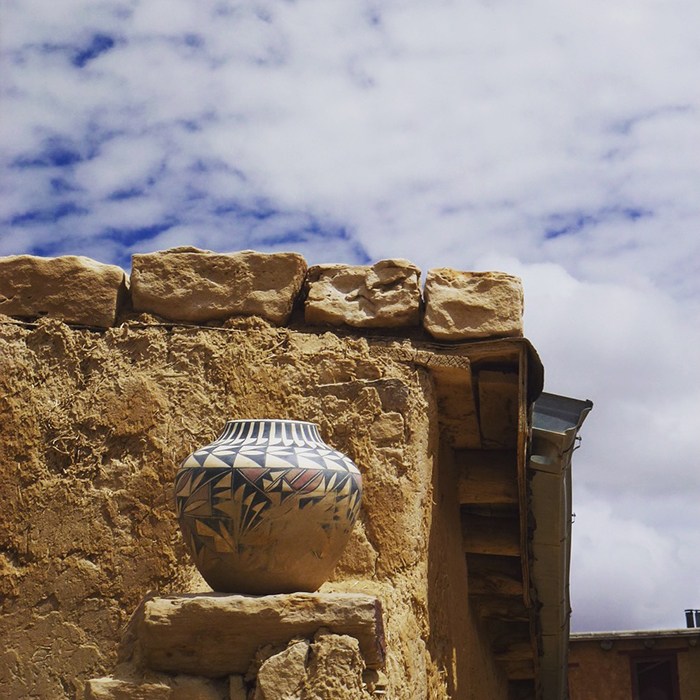Stone (Keres: Younii’) #
Stone was the first building material utilized at Acoma, as well as at the ancestral sites like those we know as Mesa Verde, Chaco Canyon, and Aztec Ruins. Some of these sites lend distinctive stone patterning to the architectural vocabulary. Stone is especially important in the Western Pueblos at Acoma and Zuni (and Hopi in Arizona), as water is scarce and therefore adobe more challenging to make and maintain.
Stone in general is extremely durable, and sandstone “flakes” rather easily, making it a plentiful and abundant local natural building resource. Stone is often used in foundations and first floor walls at Acoma, as well as splashblocks beneath canales, blocking between vigas, and sometimes as a weather-resistant topping for walls. Stone is also used to help build dams for Acoma’s natural water cisterns on top of the mesa. Stone is often re-purposed, which makes using it a sustainable investment. In modern times, individual blocks of stone are also used at the edges of roofs to hold down asphalt and felt roofing so they do not pull away from the edge of the roof and expose the wood beneath to rainfall.
Stone used in the cultural center uses all of these methodologies. The seven patterns used are from Chaco Canyon, Mesa Verde, and other important ancestral sites.
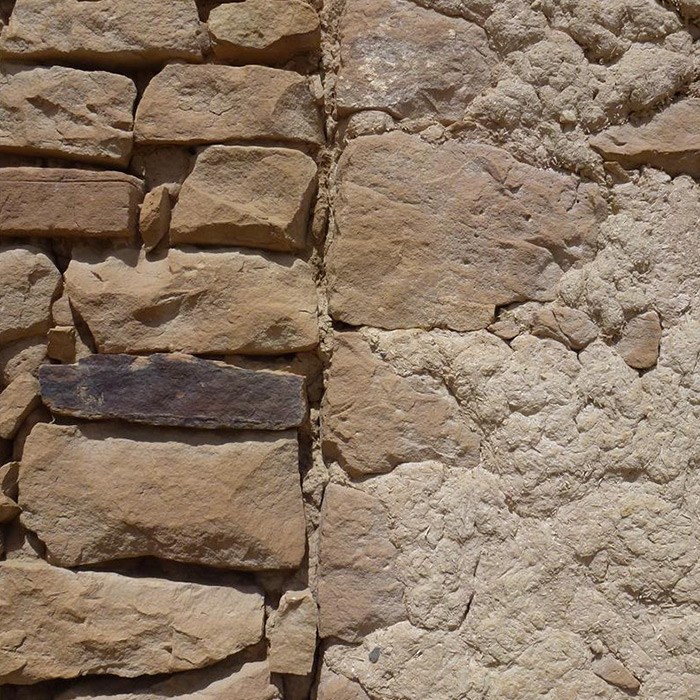
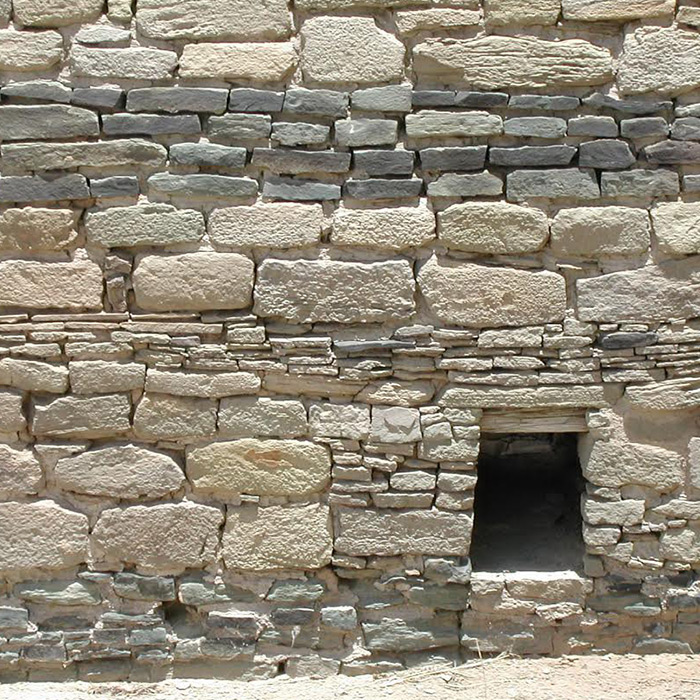
Mud (Keres: Yaashpatwii’) #
Mud is an essential building material throughout New Mexico. It is used for adobe as well as earth plastering. Mud is considered part of the culture of traditional communities because earth stucco has to be repaired annually. Almost every community has a storytelling, work, and feast tradition around the enjarre, or annual remudding, which was most often completed by the women of the community. This remudding usually occurs at Acoma in July and August after summer monsoons have filled the natural cisterns in the village.
Clay, a specific type of mud, is an essential ingredient to pottery, another vitally important element of Puebloan culture and building, especially at Acoma.
Muds used on the cultural center include traditional earth as well as gypsum or lime plasters. In the cultural center, the stone or adobe beneath might be exposed, a reference to how buildings change over time, and what we see as a beautiful and unique pattern of exposed stone today at Chaco Canyon was once a hidden element beneath earthen plaster. As well, in the Cultural Center, the adobe is allowed to slump, sliding out wider at the bases of the buildings, which echoes the slump found in traditional adobe walls once they have been replastered many times. There are six colors of plaster used on the Cultural Center, all of which come from pigments found within the immediate landscape. Several of the colors used are visible at small vista east of the observation pullout on the road north of the Cultural Center.
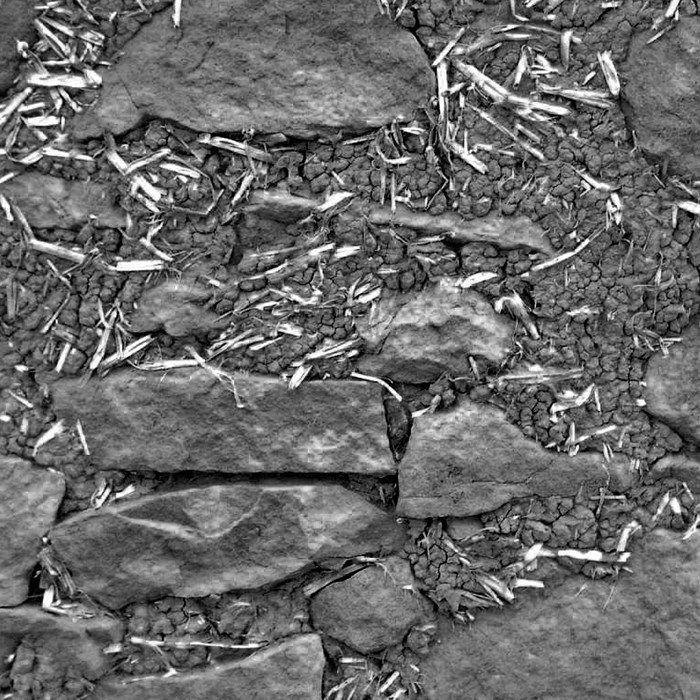
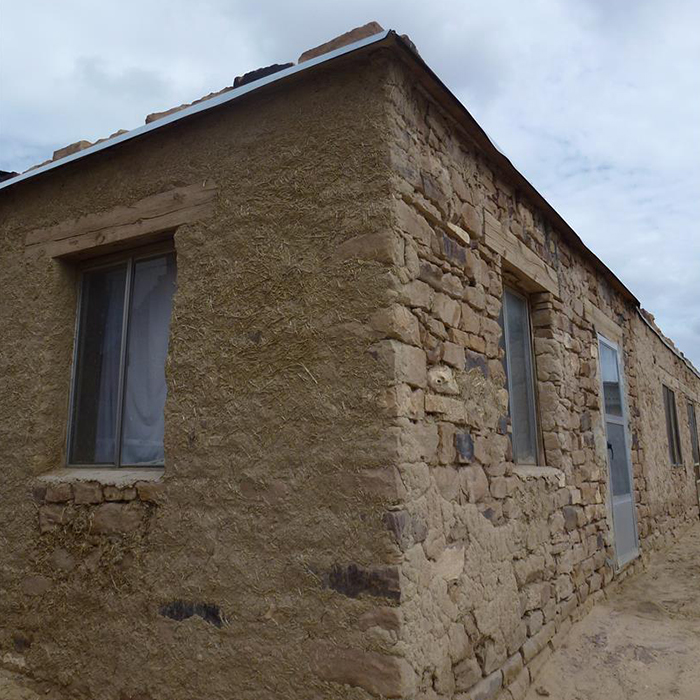
Wood (Keres: Gootsi’) #
Wood is an essential element of traditional building throughout New Mexico. Local woods used in buildings at Acoma include juniper and piñon. Spruce, douglas fir, pine, and ponderosa from the surrounding mountains are also used. Traditional pueblo architecture used peeled logs for vigas, as well as smaller branches for latilla ceilings and ladders. Large stair treads may use half-cut (long-split) logs.
Because of the difficulty in attaining the vigas, the room sizes were limited to the span of available timber – typically piñon or ponderosa pine, and rarely over 14 feet long. After the Spanish arrived, wood beams were often cut square or rectangular, as they were hand-carved using woodworking tools the Puebloans did not have. We may also see hand-adzed planks used on the ceiling or wood doors to represent the Hispanic influence. We also see hollowed out logs or eventually milled wood used in canales, or roof gutters. It was very common for Puebloans to dry meats, chiles, and edible and medicinal herbs by hanging them on wood branches strung between viga ends on the upper floors of the homes. Today, wood is used in all of these ways, as well as a siding for a sheds and barns, and used in furnishings and doors.
Throughout the Cultural Center, we can see wood used in these methods. The patterns used on the wood represent Acoma’s pottery and weaving traditions, and prayers for rain.
Intact beams, doors, corbels, and details from historic homes and the mission church have been carefully preserved and protected so this lasting legacy of Acoma design is preserved for generations to come.
Natural Building Materials #
Cactus, willow, chamisa and yucca are also used from the local landscape for some aspects of building, including latillas, woven matting, as well as basketry.
Tree Ring Dating #
Dendrochronology, or tree ring dating, is a form of measuring time in regard to construction. The process is simple: tree rings grow each season in response to variables of place and time. Those rings can be dated against other trees based on known periods of wetness and drought. In conifers, like pine and piñon, each ring contains two parts – an inner band of light cells and an outer band of dark cells, and a new ring is formed each season. It does not matter what species of tree we look at, if there was a drought in an area, all the trees of that period reflect that in the growth of their rings. By looking at the age of trees and their rings, we can determine the age of the tree when it was cut, as well as what year it was cut.
Dendrochronology at Acoma indicates that cutting of the trees used as vigas in the current pueblo began in 1646. It also tells us that trees were cut in early fall and winter, and immediately debarked with steel axes. Although rooms may be built with as many as eight vigas, there was a clear preference for using six.
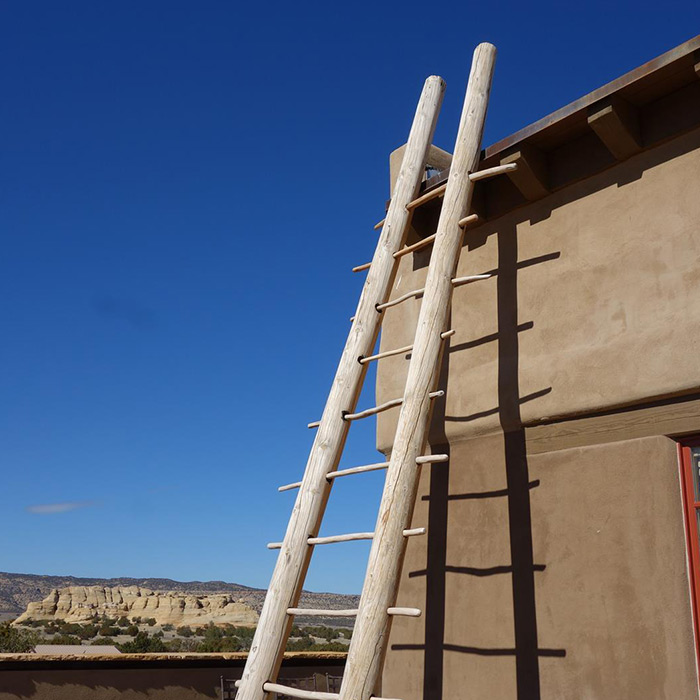
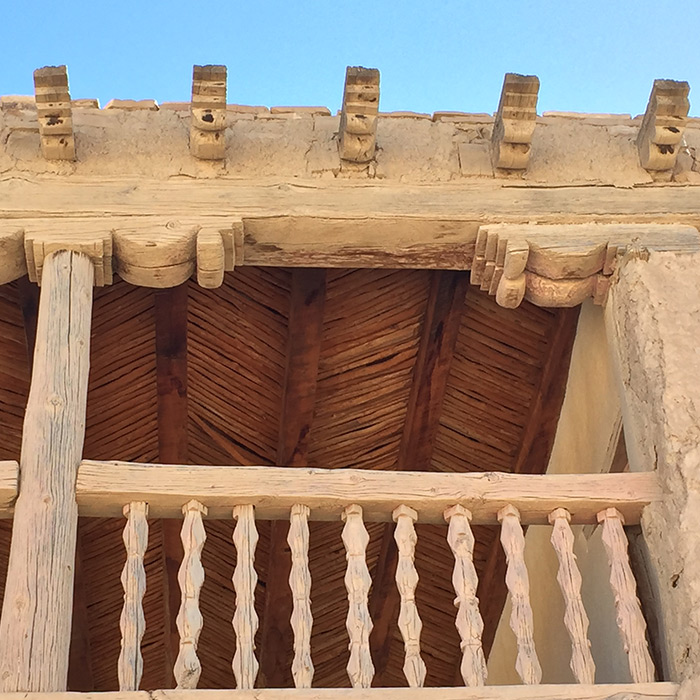
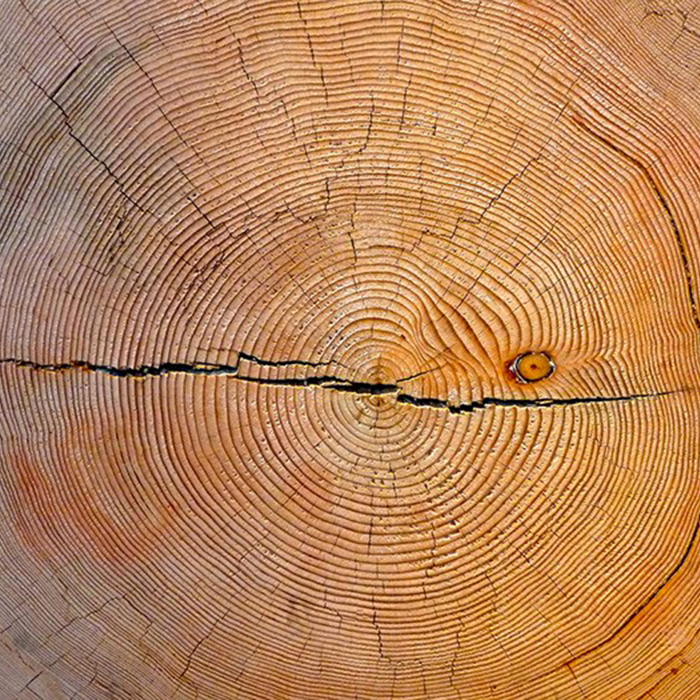
Mica (Keres: Haashgaa’ni) #
Translucent mica, gypsum, or selenite were used in pre-20th century Puebloan windows. Mica allows light through, yet it is also good for UV protection and is heat-resistant. There is one mica window remaining at the historic village. Traditionally, mica was white or as close to colorless as possible. Archaeologists think that the mica used at Acoma was found along the river closer to Albuquerque.
The innovative use of natural lighting with mica windows in the Cultural Center improved energy efficiency and also minimized potential negative impacts on collections – mica blocks UV rays and is nearly fireproof, withstanding temperatures up to 1,800˚!
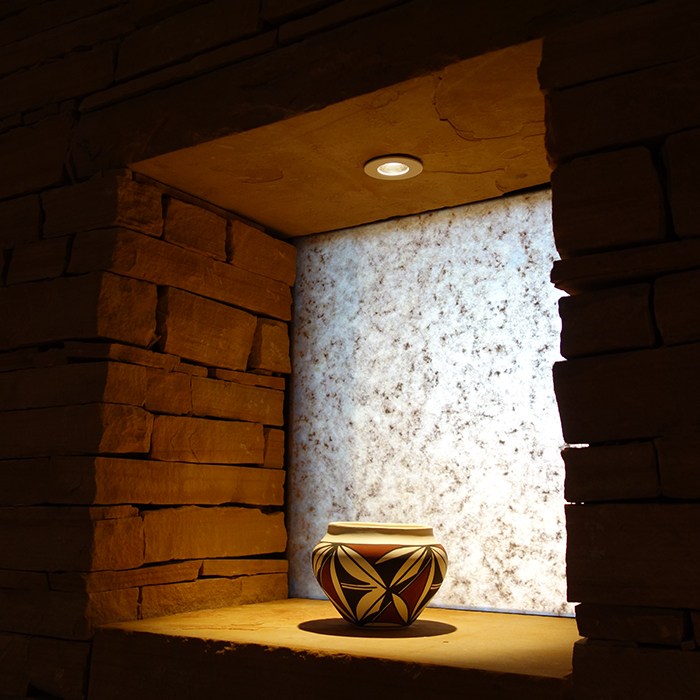
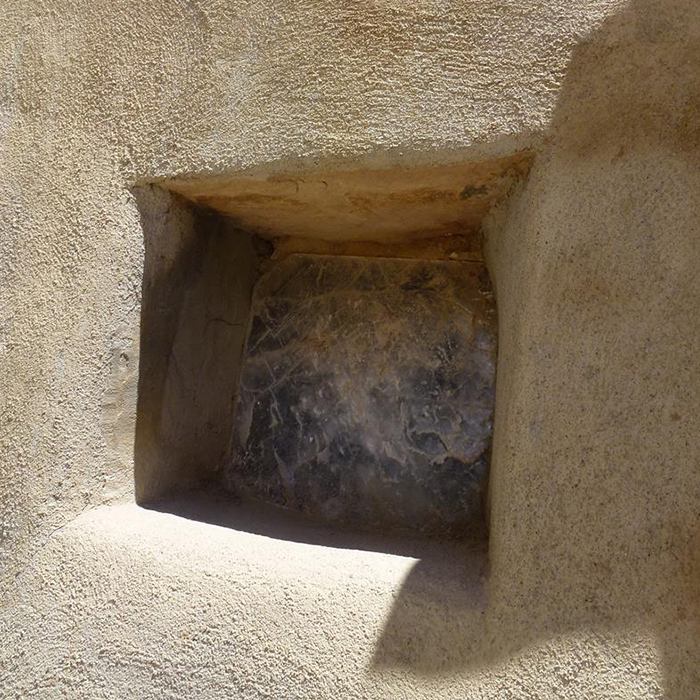
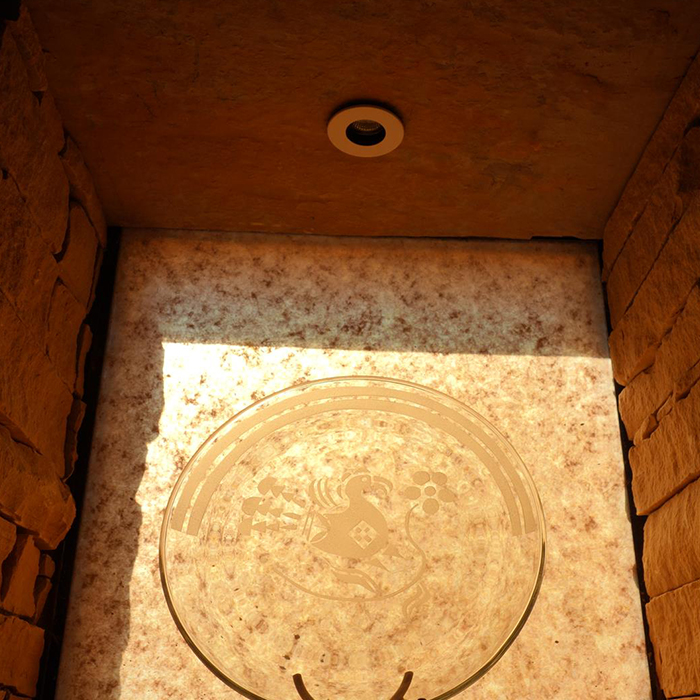
Corn (Keres: Yaaka’) #
Corn is used throughout the Southwest, not so much as a building material, but as a decorative element, as well as a ceremonial element that is particularly important to buildings. In many traditions, when a building is built or blessed, the corn’s delicate, powdery, cream colored pollen is used as part of that ceremony. As well, corn decorative elements are used in pictographs, petroglyphs, murals, carvings, jewelry, and ceremonial costuming throughout the region.
The Cultural Center uses decorative elements of corn throughout, as well as having a traditional dryland garden in the front of the building which illustrates Acoma’s traditional farming methods. The Cultural Center’s café is called the Y’aaka café, or the corn café.
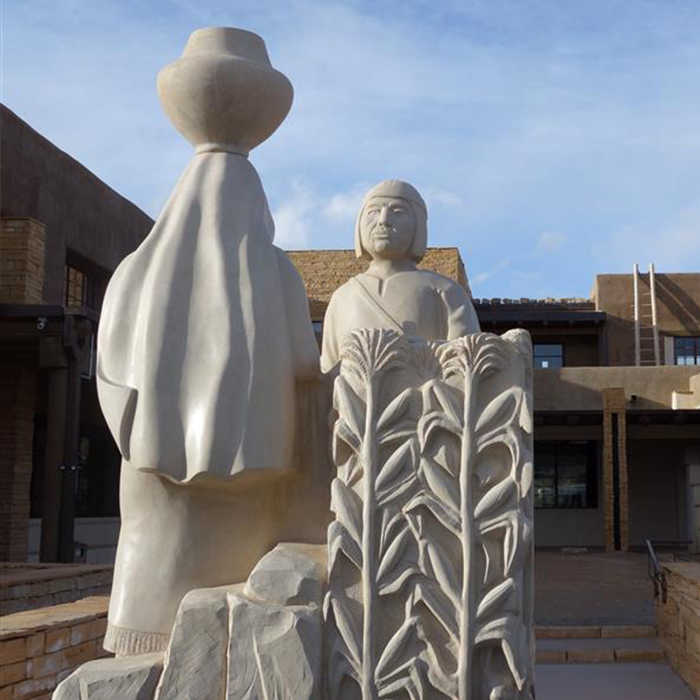
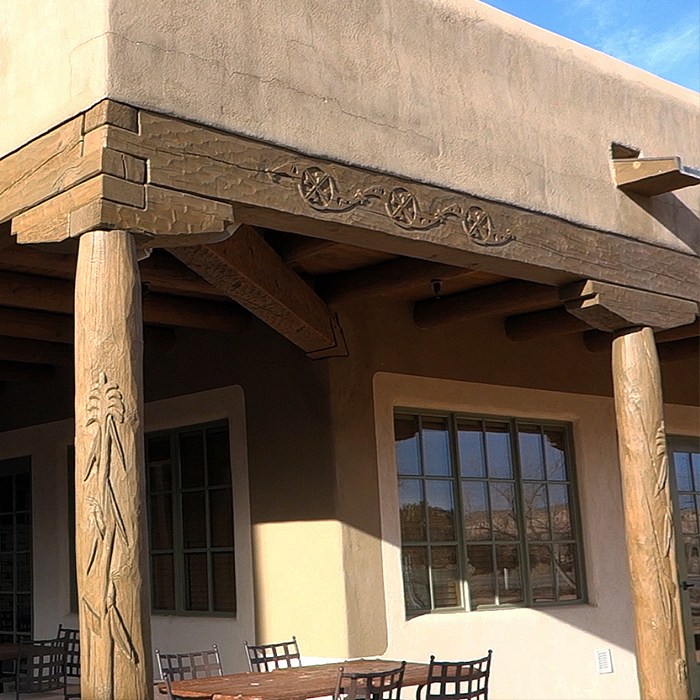
Pottery (Keres: Dyuni’) #
Pottery is one of the essential elements of Southwest cultures from ancient to present. Our museums and collections are filled with intact pieces, and potsherds (broken pot pieces) are protected as cultural resources that should never be removed from their sites.
Pottery has become essential for Acoma, as the site is far from the highway and major tourist areas and it requires both time and effort to get there. Acoma realized that the people that visited really loved their pottery, so some of their people began to make special pots to sell to tourists. This literally put Acoma on the map, bringing thousands of tourists every year, and Acoma’s pottery is now considered some of the finest in the world.
Traditionally, Acoma pottery was used for collecting water, ceremony, cooking, and eating from. And broken pots are important too! Pots with their bottoms broken out were used as chimney pots and broken potsherds are added to clay to make new pots water-resistant.
The Cultural Center uses decorative pottery details to honor their traditions and also celebrates the long tradition of making in its museums. Inside the space, a blown-up pattern from renowned Acoma potter Lucy Lewis is used as a decorative element for a window along a long hallway. Decorative tiles, pots, and sculptures throughout the building celebrate Acoma’s pottery culture from ancient to modern, using designs of old, as well as from modern designers Brian Vallo and Marilyn Ray, and designs from many of Acoma’s school-age children.
Cloud Patterns #
Throughout Acoma’s pottery as well as the design of the cultural center are various forms of cloud patterns – often in some form of triangle motif. These represent prayers for rain.
